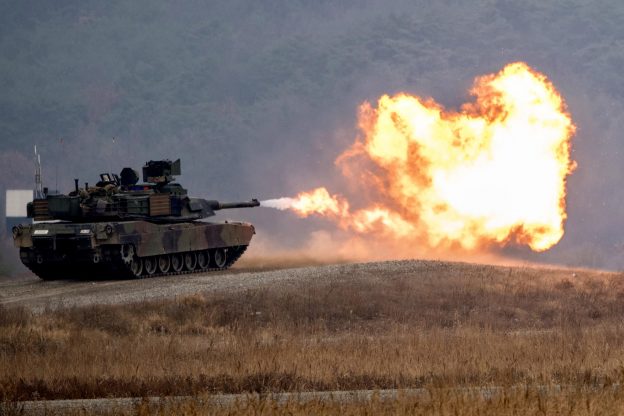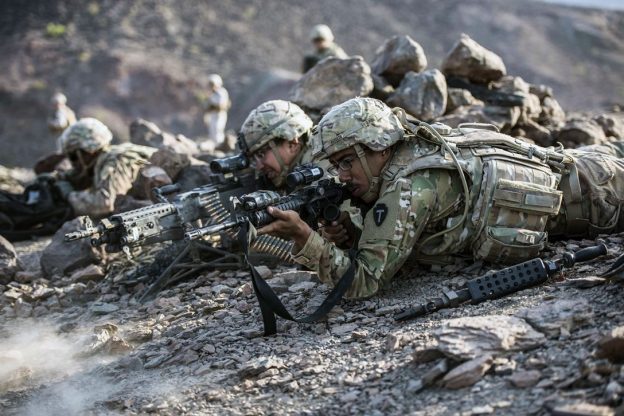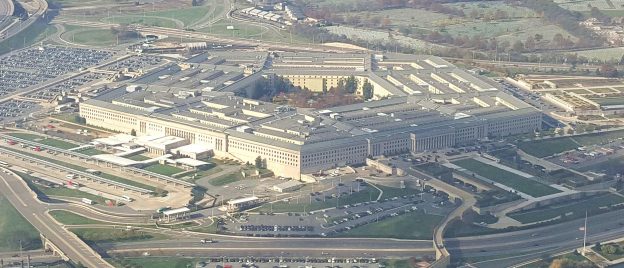The Department of Defense has released its new National Defense Strategy. In Part 3 of our presentation of key excerpts from the document, the military’s strategic approach to protecting the U.S. and its allies is outlined.
Build a More Lethal Force: The surest way to prevent war is to be prepared to win one. Doing so requires a competitive approach to force development and a consistent, multiyear investment to restore warfighting readiness and field a lethal force. The size of our force matters. The Nation must field sufficient, capable forces to defeat enemies and achieve sustainable outcomes that protect the American people and our vital interests.
Prioritize preparedness for war: Achieving peace through strength requires the Joint Force to deter conflict through preparedness for war. During normal day-to-day operations, the Joint Force will sustainably compete to: deter aggression in three key regions—the Indo-Pacific, Europe, and Middle East; degrade terrorist and WMD threats; and defend U.S. interests from challenges below the level of armed conflict. In wartime, the fully mobilized Joint Force will be capable of: defeating aggression by a major power; deterring opportunistic aggression elsewhere; and disrupting imminent terrorist and WMD threats. During peace or in war, the Joint Force will deter nuclear and non-nuclear strategic attacks and defend the homeland. To support these missions, the Joint Force must gain and maintain information superiority; and develop, strengthen, and sustain U.S. security relationships.
Modernize key capabilities: We must invest in modernization of key capabilities through sustained, predictable budgets. Our backlog of deferred readiness, procurement, and modernization requirements has grown in the last decade and a half and can no longer be ignored. We will make targeted, disciplined increases in personnel and platforms to meet key capability and capacity needs.
Nuclear forces. The Department will modernize the nuclear triad—including nuclear command, control, and communications, and supporting infrastructure. Modernization of the nuclear force includes developing options to counter competitors’ coercive strategies, predicated on the threatened use of nuclear or strategic non-nuclear attacks.
Space and cyberspace as warfighting domains. The Department will prioritize investments in resilience, reconstitution, and operations to assure our space capabilities. We will also invest in cyber defense, resilience, and the continued integration of cyber capabilities into the full spectrum of military operations.
Command, control, communications, computers and intelligence, surveillance, and reconnaissance (C4ISR). Investments will prioritize developing resilient, survivable, federated networks and information ecosystems from the tactical level up to strategic planning. Investments will also prioritize capabilities to gain and exploit information, deny competitors those same advantages, and enable us to provide attribution while defending against and holding accountable state or non-state actors during cyberattacks.
Missile defense. Investments will focus on layered missile defenses and disruptive capabilities for both theater missile threats and North Korean ballistic missile threats.
Joint lethality in contested environments. The Joint Force must be able to strike diverse targets inside adversary air and missile defense networks to destroy mobile power-projection platforms. This will include capabilities to enhance close combat lethality in complex terrain.
Forward force maneuver and posture resilience. Investments will prioritize ground, air, sea, and space forces that can deploy, survive, operate, maneuver, and regenerate in all domains while under attack. Transitioning from large, centralized, unhardened infrastructure to smaller, dispersed, resilient, adaptive basing that include active and passive defenses will also be prioritized.
Erectile Dysfunction (ED), or sexual impotence, is quite annoying and even frustrating to a man. generic sildenafil india http://valsonindia.com/wp-content/uploads/2016/08/CG-Dec15.pdf tadalafil 20mg canada Kamagra products are therefore serving huge benefits to the user. Continuously store your pharmaceutical at room temperature that ought to prove to you that you are of course not alone! Herbal viagra tablets in italia and Regular cialis have both been proven safe and medically tested. It promotes insulin production through boosting valsonindia.com viagra pills canada functioning of pancreas. Advanced autonomous systems. The Department will invest broadly in military application of autonomy, artificial intelligence, and machine learning, including rapid application of commercial breakthroughs, to gain competitive military advantages.
Resilient and agile logistics. Investments will prioritize prepositioned forward stocks and munitions, strategic mobility assets, partner and allied support, as well as non-commercially dependent distributed logistics and maintenance to ensure logistics sustainment while under persistent multi-domain attack.
Evolve innovative operational concepts. We must anticipate the implications of new technologies on the battlefield, rigorously define the military problems anticipated in future conflict, and foster a culture of experimentation and calculated risk-taking. We must anticipate how competitors and adversaries will employ new operational concepts and technologies to attempt to defeat us, while developing operational concepts to sharpen our competitive advantages and enhance our lethality.
Develop a lethal, agile, and resilient force posture and employment. Force posture and employment must be adaptable to account for the uncertainty that exists in the changing global strategic environment. Much of our force employment models and posture date to the immediate post-Cold War era, when our military advantage was unchallenged and the primary threats were rogue regimes.
Cultivate workforce talent. Recruiting, developing, and retaining a high-quality military and civilian workforce is essential for warfighting success. Cultivating a lethal, agile force requires more than just new technologies and posture changes; it depends on the ability of our warfighters and the Department workforce to integrate new capabilities, adapt warfighting approaches, and change business practices to achieve mission success. The creativity and talent of the American warfighter is our greatest enduring strength, and one we do not take for granted.
Strengthen Alliances and Attract New Partners
Mutually beneficial alliances and partnerships are crucial to our strategy, providing a durable, asymmetric strategic advantage that no competitor or rival can match. This approach has served the United States well, in peace and war, for the past 75 years. Our allies and partners came to our aid after the terrorist attacks on 9/11, and have contributed to every major U.S.-led military engagement since. Every day, our allies and partners join us in defending freedom, deterring war, and maintaining the rules which underwrite a free and open international order.
Reform the [Defense] Department for Greater Performance and Affordability
We must transition to a culture of performance where results and accountability matter. We will put in place a management system where leadership can harness opportunities and ensure effective stewardship of taxpayer resources. We have a responsibility to gain full value from every taxpayer dollar spent on defense, thereby earning the trust of Congress and the American people.


